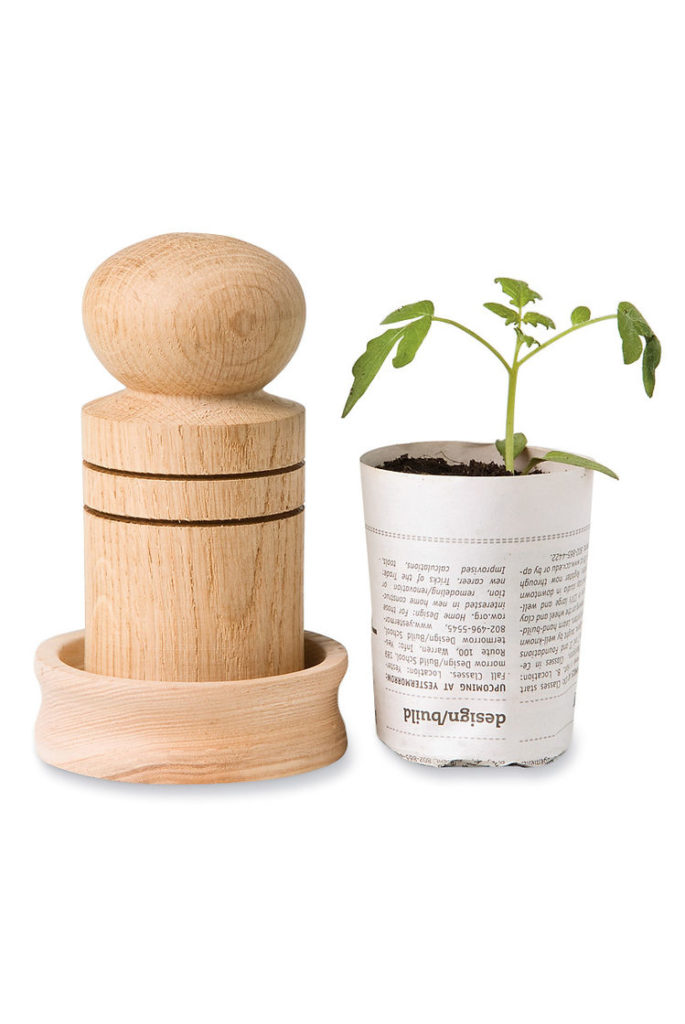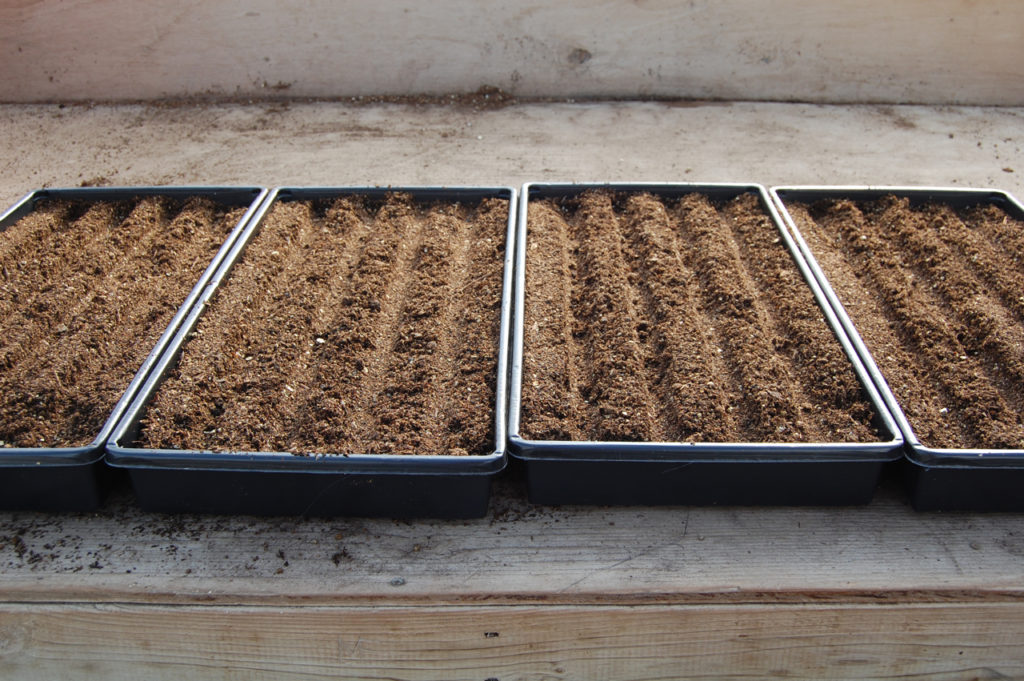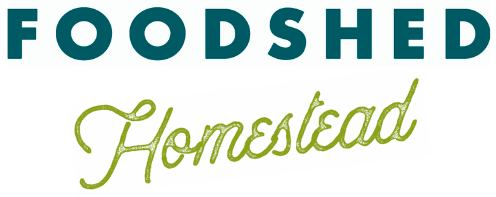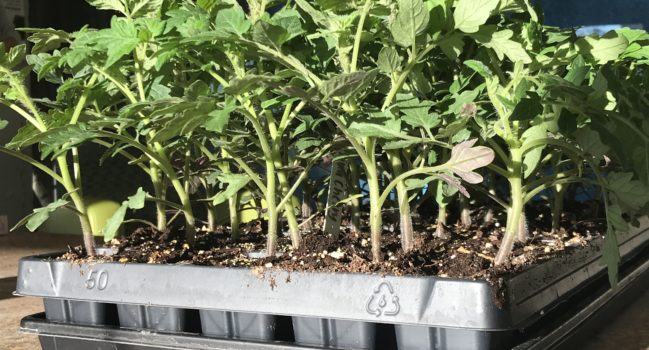From plastic cell-packs to egg cartons, there are many containers you can use to get your plants started. Just remember that it’s important for your containers to have drainage holes – too much water can be bad for little plants. You never want your potting soil to be completely drenched to the point that water is dripping out of the bottom of the container.

I like to tell people that ideal moisture level after watering is jello-like (meaning the tray/container should feel like it’s full of jello when you lift and bounce one side).

- Cell packs/plug flats – These are made of plastic and can be purchased from your local garden supply store. If you take good care of them they can be reused from year to year. I recently bought a tray of six-cell packs (12 per flat) for $1.35 from a local grow store.
- Egg cartons – Cardboard/paper egg cartons tend to be the best because they have built in drainage, allowing just enough water to wick and evaporate through the container walls. They can also help prevent transplant shock when you plant them in the garden. (Plus they’re free!) Styrofoam and plastic egg cartons can be used as well but you’ll have to poke drainage holes in the bottom. You’ll likely need to pot-up certain plants into larger containers before planting them out such as tomatoes which like to be a bit bigger. (See below for more information on best size for transplanting out.)

- Yogurt containers – Little individual yogurt containers can be great for plants – just poke a few pea-sized holes in the bottom and pot your tomatoes up into them once they’re too big for the cells you started them in.
- Biodegradable Fiber pots – These nifty little things are great for airflow which is important for root growth, similar to egg cartons. They can also help prevent transplant shock when you plant them in the garden.
- Paper pots – Speaking of nifty, check out this little do-hickey! I can’t personally vouch for how well it works but I love the idea of it and it gets pretty decent reviews.
What size for which plant?
Farmers often use what are called plug trays/cells for planting because it’s an efficient way to pack a lot of plants into a small amount of space. I’m accustomed to growing this way and have found that the logic makes sense for gardeners and homesteaders as well since most of us don’t have a ton of space to work with at home.
I’ll explain cell size from the farmer’s perspective and you can adapt it to your own system with the containers you have access to. (These trays can be found places such as Johnny’s Selected Seeds or Greenhouse Megastore if you decide to go that route.) The trays below are 11″x21″ and the numbers correspond to the number of cells per tray.

| Tray Type | Cell width (square, inches) | Cell depth (inches) | Some Common Uses |
| 128 (small) | 1.2 | 2 | cool season crops |
| 72 (medium) | 1.5 | 2.25 | peppers, eggplants |
| 50 (large) | 1.9 | 2.33 | tomatoes, cucurbits |
| Open flat | NA | 2.44 | onions |
| 20-row | 11 | 1.24 | germination of several crops |
The size of these trays isn’t ideal for most gardeners (128 plants is a lot to manage in one tray!) Different crop types sometimes need to be handled in different ways and trays with fewer cells allow for this. For instance, although you might grow Swiss chard and kale using the same size cell/container, chard typically takes 1.5x longer than kale to grow so growing them in separate trays/sections makes sense. You can cut these trays up but it definitely decreases their lifespan. That’s why 6-cell packs and other salvaged containers are great options.
I’ve found that seed size often reflects the cell size that’s most appropriate (kale seeds tend to be super tiny while squash seeds are quite large). The only plants I seed directly into 50s are cucurbits. (For the thrifty gardener, this would look like a small yogurt container.)
128 cell trays have 128 cells per tray and are the smallest size I recommend for growing transplants. Most of your cool season crops do well in this size cell (broccoli, kale, Swiss chard, head lettuce, etc.) I also use them for basil, celery, and other assorted plants.
chard in 128 tray at 2 weeks chard in 128 tray at 6 weeks
20-row trays are meant for germinating seedlings in smaller spaces and are great if you’re only able to heat a small amount of space for this phase (such as with a small heat mat). I typically use 20-rows for tomatoes, peppers, and eggplants which like warmer temperatures to germinate and then pot them into larger containers once they’ve established their first couple of leaves.
Onions take a long time to grow and need lots of nutrients over several weeks. They do well seeded in rows in open flats. (Another solid candidate for yogurt containers if you only want a small amount.)

I start tomatoes, peppers, eggplants in 128s and pot them up into 72s and 50s.

Go here to learn how to make a seeding schedule, including the most appropriate size for each crop and approximately how long they take to grow to that size.




